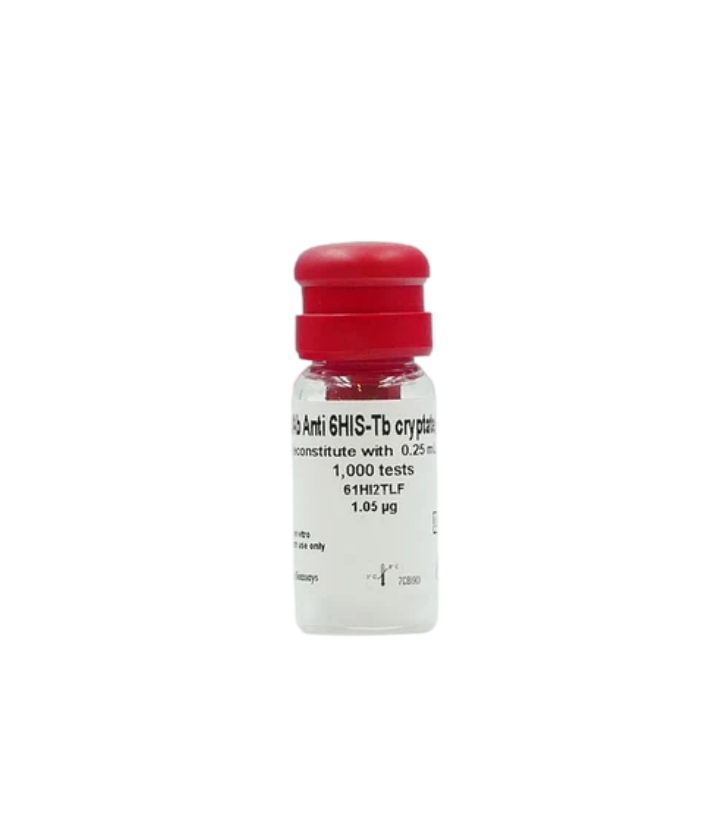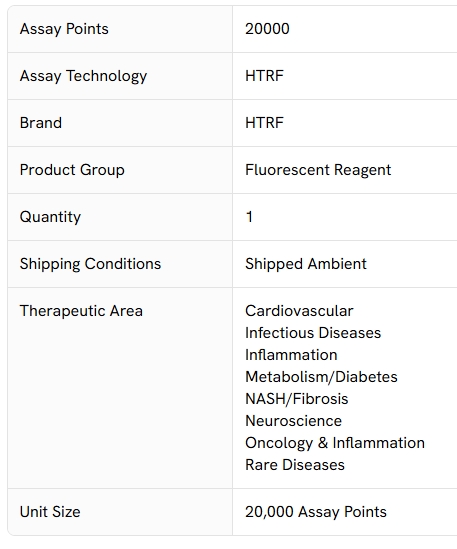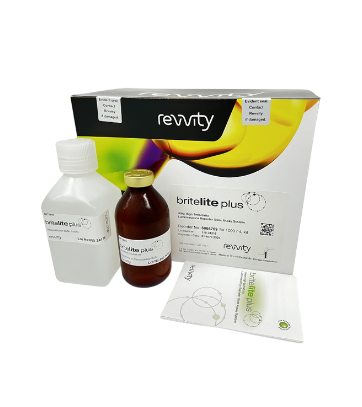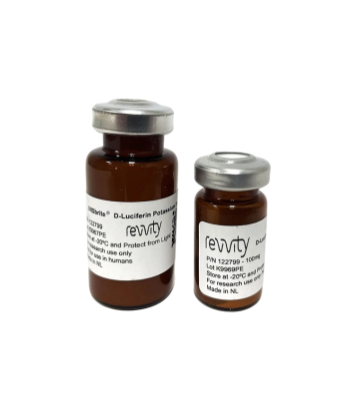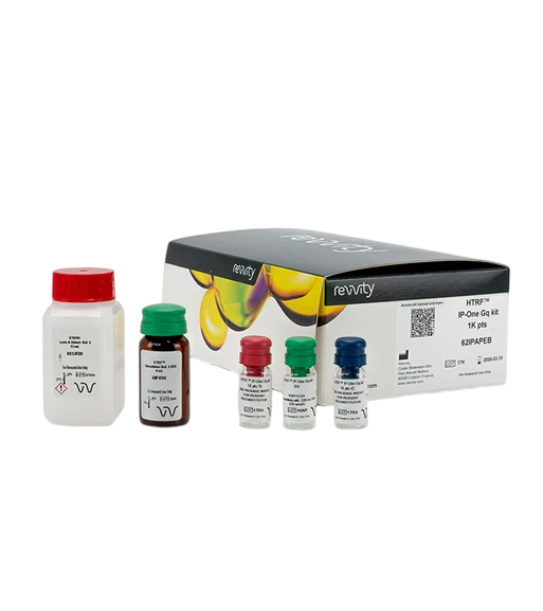Assay principle
In an HTRF interaction assay, one partner is labeled (directly or indirectly) with the donor, and the other with the acceptor (again, directly or indirectly). The intensity of the signal is proportional to the binding of the 2 partners. In the example shown here: MAb Anti-6HIS Tb cryptate Gold binds to the 6 His tagged partner A while partner B* binds to a specific Ab labeled with an HTRF acceptor. *partner B can also be biotinylated, tagged, Fc fused. In these cases, use the corresponding HTRF reagent (anti-Tag, anti-species, protA, Streptavidin) labeled with acceptor for the detection.

Assay protocol
The example on the right describes the protocol using a 20 µL final assay volume for detecting an interaction between a 6 His-tagged partner A and a non-tagged partner B*. Dispense the 2 partners (10 µL), incubate, add MAb Anti-6HIS Tb cryptate Gold (5 µL) and anti-partner B labeled with acceptor (5 µL), incubate and read. *partner B can also be biotinylated, tagged, Fc fused or directly labeled. In these cases, use the corresponding HTRF reagent (anti-Tag, anti species, protA, Streptavidin) labeled with acceptor for the detection.

Assay details
How do the number of tests relate to active moiety?
The average conjugate quantity per well reflects overall biological material content. Using the active moiety amount is generally preferred to the quantity of total conjugate. For Cryptate and d2 conjugates, the total conjugate amount equals that of the active moiety, since the molecular weight of the label is negligible. This is not the case for XL665 labeled entities for which the quantity of total conjugate will vary depending on the final molar ratio of the XL665 conjugate, however, the amount of active moiety, provided by Revvity, is constant and based on the number of tests ordered.

Recommended quantities of Cryptate and XL665 conjugates
Cryptate conjugates must not be excessive in order to prevent reader saturation and an unacceptable level of background. In most cases, a cryptate concentration of 1 to 5nM is appropriate, and will generate 20,000 to 80,000 cps at 620 nm depending on the HTRF compatible reader used. The XL665 conjugate must match its assay counterpart as closely as possible in order for the maximum number of biomolecules to be tagged with the XL665 acceptor. Thus, to detect a tagged molecule at an assay concentration of 20nM, the concentration of anti-Tag-XL665 should be equimolar or higher.
Assay validation
Europium versus Terbium antibodies to qualify molecular interactions
Depending on the Tag-location the assay performance may vary from one protein to another. Here we describe the parallel use of different Revvity anti 6His conjugates (Eu, Tb , Eu Gold, Tb Gold) and Lanthascreen anti His tag antibody (Eu, Tb). These cases reveal that depending on the interaction studied, the antibody used might need to be different: in one case the Eu based antibody performs well and in the other, terbium showed better results. For each interaction tested below, the Revvity Anti6His Gold conjugate out-performed the Lanthascreen Anti-6His tag antibody.
Assay principle of BRD4(1)-H4 peptide interaction
6His-tagged BRD4(1) reader domain binding to the biotinylated peptide substrate H4 is detected by a conjugate mix: donor Cryptate labeled antibody raised against the 6His tag and SA-XL665, for the detection of the biotin-peptide.

Determination of the optimal H4 peptide concentration
The first step of peptide titration revealed that no detection was possible when using Lanthascreen Eu or Tb antibody donor s (data not shown for Tb labeling). For these, no further compound screening can be considered. However, both Gold and the classical version of anti-6His antibodies from Revvity enabled detection of the interaction. The assay window was increased using the Gold version.

JQ1 inhibitory effect on BRD4-H4 interaction
JQ1 inhibitor IC50 was found between 12 and 24.5nM ,in agreement with the literature. As expected, the new Anti-6His cryptate Gold showed an increased assay window .

Assay principle of NEFcore/ Hck(SH3 domain) prot-prot interaction
NEFcore HcK SH3 domain interaction is an important target for HIV infectious disease. Inhibitors of this interaction are important targets and are considered as therapeutic solutions. NEFcore , fused to the GST tag is detected using Revvity PPI MAb Anti GST-d2 antibody at 3 nM. The HcK SH3 domain which contains a 6His tag is detected using the Anti 6His Gold donor conjugate.

Determination of optimal GST-Nef concentration
Where no detection was possible when using Revvity Anti-6His Tb Cryptate (same results observed with Eu, data not shown), the Gold version showed a significant increase in the assay window, enabling further screening of this protein-protein interaction. The results were superior to those obtained using Lanthascreen Tb anti-HIS-tag antibody (same conclusion for Eu, data not shown).

FynSH3 inhibitory effect on NEFcore/ Hck(SH3 domain) interaction
Inhibitor screening assay is shown using FynSH3 protein, which binds to the Nef Core domain competing with the HcK SH3 domain. This showed an IC50 of 0.7-2 µM. The assay window was slightly better using Revvity Anti-6His Tb cryptate.


